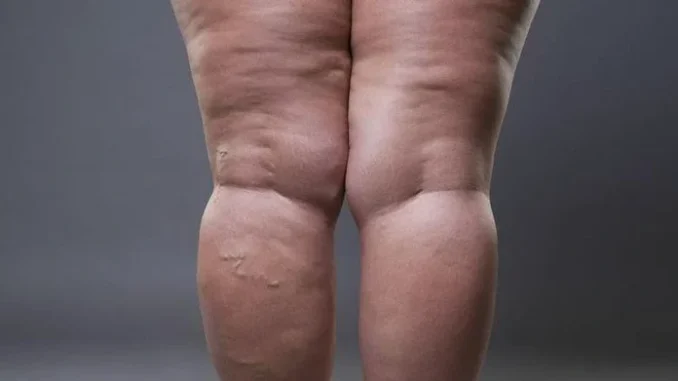
Cellulite is a common condition that affects the appearance of the skin, causing it to have a lumpy and dimpled texture, often likened to the surface of an orange peel.
While it is not a medical condition, it can be a source of cosmetic concern for many people. This article will explain what cellulite is, its causes, and effective methods to reduce or get rid of it.
Cellulite occurs when fat deposits push through the connective tissue beneath the skin, primarily in areas such as the thighs, buttocks, and abdomen. This results in a bumpy or dimpled appearance on the skin’s surface.
-
Texture: The skin appears lumpy and dimpled.
-
Common Areas: Thighs, buttocks, abdomen, and sometimes arms.
-
Severity Levels: Ranges from mild (visible only when the skin is pinched) to severe (visible all the time).
The exact cause of cellulite is not fully understood, but several factors are believed to contribute to its development:
Genetics play a significant role in determining the likelihood of developing cellulite. Factors such as body type, skin structure, and fat distribution patterns are inherited.
Hormones, particularly estrogen, play a crucial role in the formation of cellulite. Changes in hormone levels can affect the distribution and thickness of fat and connective tissue.
-
Diet: A diet high in fat, carbohydrates, and salt and low in fiber can contribute to the development of cellulite.
-
Activity level: Lack of physical activity can lead to the accumulation of fat, which may worsen cellulite.
-
Hydration: Poor hydration can affect the appearance of the skin and connective tissues.
As we age, the skin loses elasticity and becomes thinner, which can make cellulite more noticeable.
Significant fluctuations in weight can cause the skin to stretch and the connective tissues to weaken, making cellulite more apparent.
While completely eliminating cellulite can be challenging, there are several methods to reduce its appearance. These include lifestyle changes, topical treatments, and medical procedures.
-
Balanced Diet: Eat a balanced diet rich in fruits, vegetables, lean proteins, and whole grains to help maintain a healthy weight and improve skin texture.
-
Hydration: Drink plenty of water to keep the skin hydrated and flush out toxins.
-
Cardio workouts: Activities such as running, cycling, and swimming can help burn fat and improve overall muscle tone.
-
Strength training: Building muscle through resistance training can help tighten the skin and reduce the appearance of cellulite.
-
Caffeine-based creams: Caffeine can temporarily tighten the skin and improve blood flow, reducing the appearance of cellulite.
-
Retinol creams: Retinol can help thicken the skin and improve its texture over time.
-
Exfoliation: Dry brushing involves using a stiff-bristled brush to exfoliate the skin, which can stimulate blood flow and lymphatic drainage, potentially reducing cellulite.
-
Cellulaze: A minimally invasive procedure that uses laser energy to break down the tough bands under the skin that cause cellulite.
-
Radiofrequency: Treatments like Thermage use radiofrequency energy to heat the skin and stimulate collagen production, which can improve skin texture.

-
Spa Treatments: Body wraps with ingredients like algae, mud, or clay can temporarily reduce the appearance of cellulite by tightening the skin.
Cellulite is a common and natural occurrence that affects many people, regardless of body type or weight.
While it can be challenging to eliminate completely, a combination of healthy lifestyle changes, topical treatments, and medical procedures can significantly reduce its appearance.
Understanding the causes and available treatments can help you manage cellulite effectively and achieve smoother, firmer skin.

Leave a Reply